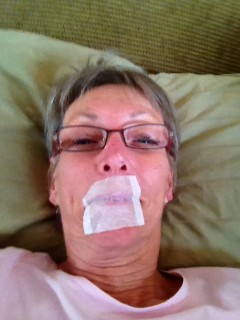I do not usually name a wellness tip after a website, but this website deserves the honorable mention, and the benefits of nasal breathing is something I had not been aware of even with all my focus on well-being for so long. It does make sense that we are created to breathe through our noses because babies nurse and breathe, and they will get very fussy if their nasal passages are plugged. Some of us remember using a nasal syringe to help a little one be able to eat and sleep and be healthy.
The average person breathes approximately 30,000 times per day.
Second only to heartbeat, we breathe more often than any other body function.
Breathing is a MAINSTREAM activity, it is not alternative or complementary, so breathing retraining should be mainstream not alternative or complementary.
While much of the information on the website is available to those who are working with a practitioner, the “bouncing bubbles” on the pages give much needed information. The website includes an introductory video of Roger Price, a Consultant Respiratory Physiologist. In 2000, Price founded the “Breathing Well Ortho-Postural” education program to help people with postural and respiratory disorders manage their conditions with minimum medication or intervention.
Proper breathing and posture has been used to successfully manage asthma, snoring, and sleep apnea, but the real shock to me was how it works to manage accompanying issues. If you are having issues with snoring visit this web site, to check out anti snoring devices.
- Hypertension
- Bed Wetting in children
- Night-time toilet trips in adults
- Digestive disorders such as heartburn and reflux
- Anxiety and Panic Attacks
The abbreviated version is that nasal breathing increases nitric oxide, a powerful vasodilator with a short half-life of a few seconds in the blood. In all mammals nitric oxide, an important cellular signaling molecule, is vital to prevent illness and disease.
These notes came from Roger this week as he was coaching me to breathing well:
Ideally ALL breathing at rest should be diaphragmatic through the nose as this is what keeps out blood chemistry in balance.
Panicky feelings and paraesthesia – tingling in extremities – are classical signs of hyperventilation and can be calmed quickly by doing the following:
Lying quietly with your mouth closed breathe in and out TWICE and then hold your breath while you count ONE, TWO in your head.
Repeat this for the same count.
Then do the same thing but count ONE, TWO THREE, and repeat as before.
Keep on increasing the count by one until you reach TEN and work your way backwards to TWO.
This should calm you down and get rid of the fluttery feelings.
In addition to my significant personal benefit of healing with nasal breathing, in just one day a woman I shared this information with was able to get her blood pressure (we wrote Reversing White-Coat Syndrome Through Language with her in mind) to come down so she could go home even while she was a hospital in-patient!
An easy way to retrain yourself is to put cotton tape over your lips. Be sure to fold back the ends a bit so you have an easy handle for removal! You will learn a lot about your own breathing patterns by doing that, and you can learn to speak and eat and drink without mouth breathing. For a giggle, enjoy this photo of my practicing using the tape during an afternoon nap. Thankfully we can learn new ways of breathing!
This week, check out Breathingwell.com.au, tell others about it. Remember to keep your mouth shut so you can really enjoy the importance of nasal breathing and the importance of nitric oxide. As Roger says, “Breathing is not all about oxygen!”
 |
Rev. Debra BashamVoice: (269) 921-2217
Email: debra@scs-matters.com https://scs-matters.com http://ImagineHealing.info http://SurgicalSupport.info Small Changes … Infinite Results™
“If we have no peace, it is because we have forgotten that we belong to each other.” ~Mother Teresa Tips from 5 April 2010 to 6 August 2012 are here: Archived Tips |

